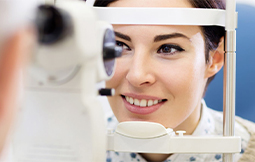
Ophthalmology is a part of medicine specializing in the anatomy, function, and diseases of the eye. An ophthalmologist (Eye M.D.), is a medical doctor who practices in the refractive, medical and surgical care of the eyes and visual system and in the prevention of eye disease and injury.
Ophthalmology is a part of medicine specializing in the anatomy, function, and diseases of the eye. An ophthalmologist (Eye M.D.), is a medical doctor who practices in the refractive, medical and surgical care of the eyes and visual system and in the prevention of eye disease and injury. The ophthalmologist is an expert who is qualified by lengthy medical education, training, and experience to diagnose, treat, and manage all eye and visual system problems.
Thorough checkup (Physician’s referral if required) Investigations
Checkup for systemic illness
Wounds that are unstable and the leak should be sutured to avoid hypotony and thereby minimizing the risk of infection.
Proper lid hygiene should be kept in the post-op period
Copyright © 2025 IMA | All Rights Reserved.